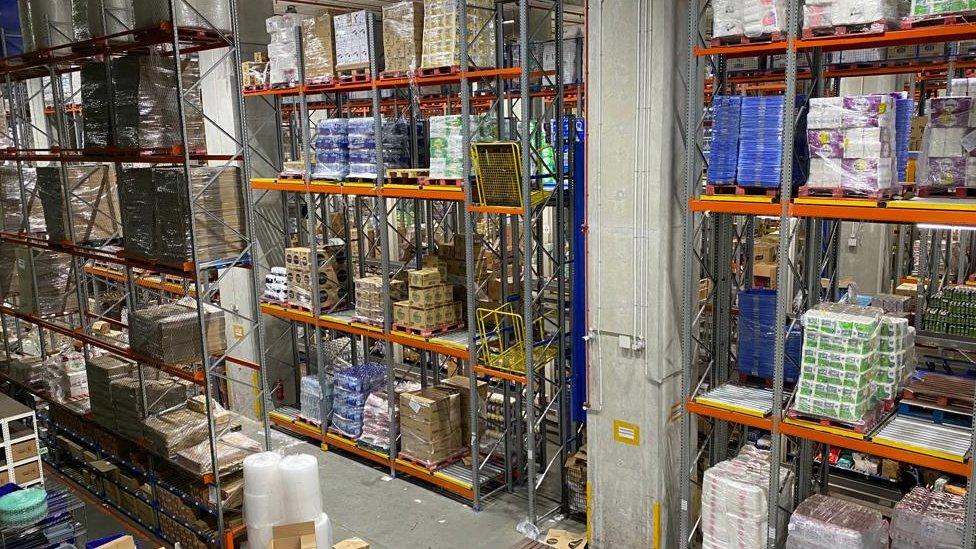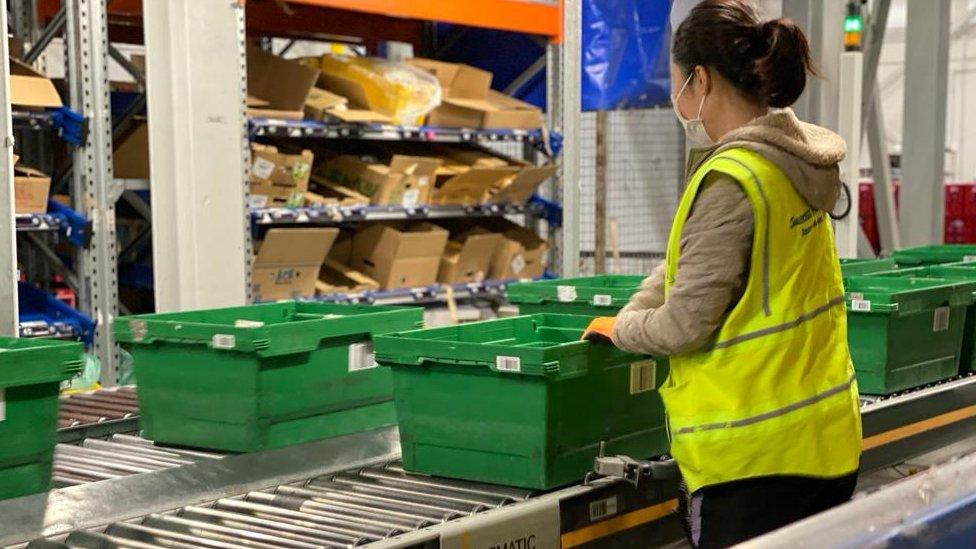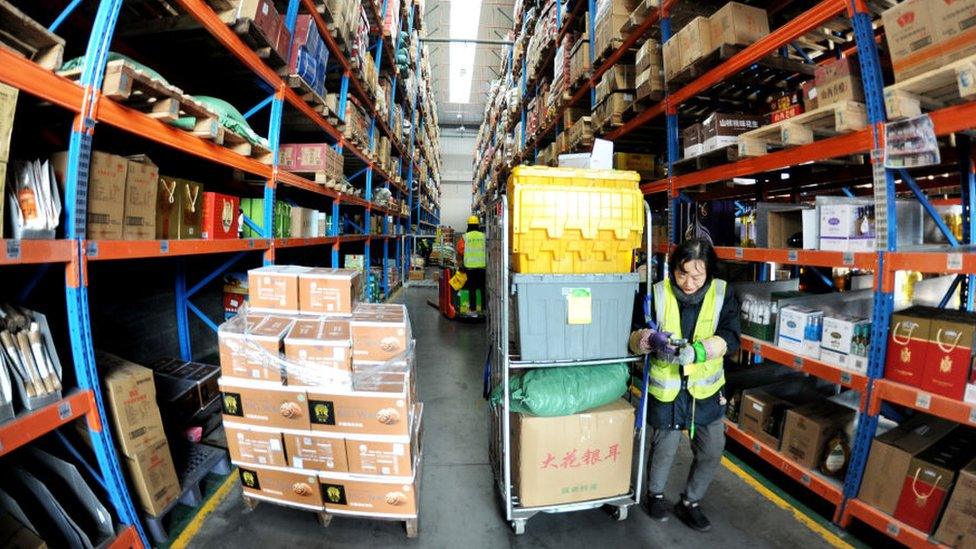Why warehouses are Asia's new hot property
- Published

RedMart is one Singapore's biggest online retailers
They are not glamorous, there are no chandeliers or luxury furnishings, yet warehouses are hot property around the world.
But why? In short, it is because businesses, especially retailers, are running out of space to put the many things we order online.
Since the pandemic began at the end of 2019, online shopping is estimated to have grown by 43.5% to reach $2.87tn (£2.1tn) globally, almost half of which came from Asia, according to market research firm Euromonitor.
The global supply chain crisis has been making headlines for months. Behind it is a web of disruptions to everything from factories, the shipping industry in Asia, the US and the UK and even a shortage of lorry drivers.
What you may not have heard about is that this has helped push the take up of warehouse space around the world close to full capacity, with vacancy rates at record low levels.
It has been particularly marked in Asia as so many of the things we buy are made in and shipped through the region.
"The current vacancy rate in Asia is around 3% which is a historic low," according to Henry Chin from CBRE, the world's biggest commercial real estate services firm.
"The stronger demands from ecommerce and the ongoing supply chain disruptions mean that companies want to hold the highest safety stock on hand," he added.
To adapt to rising demand companies like RedMart, which is one of Singapore's biggest online grocers, require larger warehouses and increasingly rely on automation.
A year ago, RedMart moved to a much bigger warehouse, quadrupling the space it has available, just as the pandemic hit. The new facility is 12 metres high and covers an area equivalent to seven football pitches.
"Four or five years ago, we recognised that the online business and sales for groceries was going to increase anyway," said Richard Ruddy, the chief retail officer of RedMart's parent company, Lazada.
"In the last 12 months, including the pandemic, the online market in Singapore grew by about 70% year over year which is about twice the previous 12 months. So the warehouse here helped us to meet part of that demand."

Inside RedMart's warehouse in Singapore
Every week tens of thousands of orders flow through the facility, which is located close to Singapore's border with one of its main importers, Malaysia.
At any one time there are more than 100,000 products in the warehouse. The fast turnaround of goods means they will all be gone within three days and replaced with new items.
Unsurprisingly, the company uses data to know exactly how many of which products it needs at any one time, while automation allows it "to use every cubic centimetre of this warehouse," Mr Ruddy said.
That has meant RedMart needed to hire just 200 extra workers to operate its much larger facility, which is crucial at a time of staff shortages.
Mr Ruddy predicts further expansion in the years ahead and RedMart is not alone in expecting such growth.

Warehouses, like this one in China's Liaoning province, are hot property across Asia
In latest CBRE survey, more than three quarters of companies using warehouses in the Asia-Pacific region said they are keen to expand in the next three years - signalling demand for warehouse space will continue to grow.
With that growth in demand warehouses look set to become ever more automated and get a whole lot taller.
"The most obvious one is in Hong Kong which has a 20 storey warehouse because the land is limited for industrial usage," said Mr Chin.
"Across Asia-Pacific, we will see three to five storeys, ramped up logistics facilities to improve efficiencies and they are also cost effective."
However, this approach to doing business is not without its critics. For years, there have been concerns that people would be replaced by robots, while the idea of warehouses taking up more and more space is not popular either.
But as we buy more and more online, retailers will just keep on growing to keep up with demand.
Ros Atkins On… Global Supply Chain Disruption
- Published9 December 2021

- Published14 December 2021
